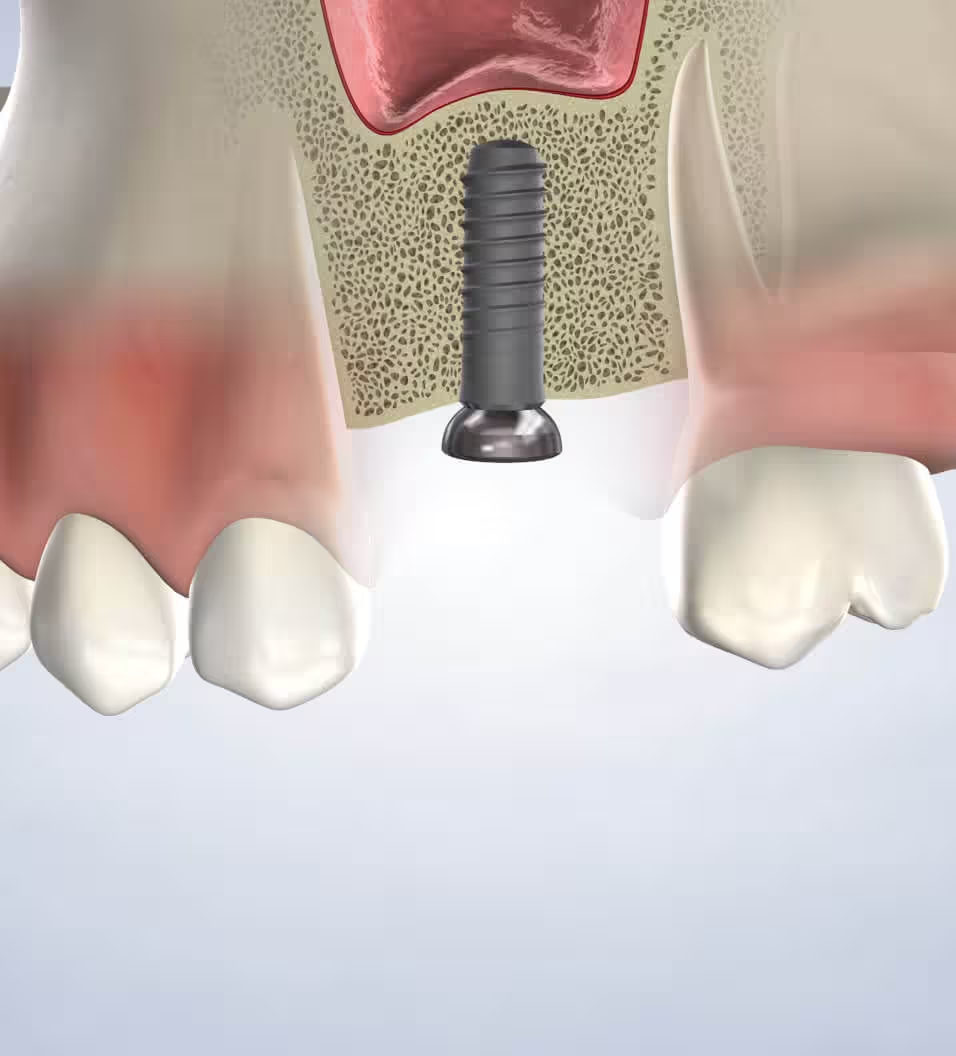What Is Bone Grafting?
Bone grafting is a surgical procedure used to rebuild or augment areas of the jaw where bone volume has diminished. It is often performed to support dental implants or to repair damage from trauma, infection, or long-term tooth loss.
Common reasons patients need bone grafting:
- Tooth loss resulting in jawbone shrinkage
- Severe gum disease (periodontitis)
- Facial trauma or injury
- Congenital jawbone defects
- Bone deterioration under dentures
- Pre-implant preparation
Without adequate bone, placing a single tooth implant or full-arch restoration can be difficult or impossible. Bone grafting helps regenerate the missing structure, restoring form and function.
Types of Bone Grafts We Perform
Our oral surgeons are skilled in several grafting techniques based on your unique condition and treatment goals.
Socket Preservation
Placed immediately after a tooth is extracted to preserve bone volume and prevent resorption.
Ridge Augmentation
Restores the natural contour of the jawbone where bone has collapsed due to missing teeth.
Sinus Lift (Maxillary Sinus Augmentation)
Performed when there’s not enough bone in the upper jaw near the sinuses for implants. Involves lifting the sinus membrane and adding graft material.
Block Bone Grafts
Used in more severe bone loss cases, often harvested from another part of the jaw.
Each grafting procedure is carefully planned using 3D scans to ensure precision and safety.
What to Expect During Bone Grafting Surgery
Consultation & Imaging
At your first visit, we will take diagnostic scans and assess your bone volume. Our surgeons will review the best grafting option, explain the procedure, and discuss sedation choices.
Sedation Options
We offer local anesthesia, IV sedation, and general anesthesia to keep you relaxed and pain-free. Your comfort is our priority during every procedure.
The Procedure
Your surgeon will place the bone graft material—either from your own body, a donor source, or synthetic material—into the affected area. Over time, your natural bone integrates with the graft to form strong, healthy support tissue.
Recovery
Mild swelling or discomfort is common, and most patients resume normal activity within a few days. Complete bone integration can take 3–6 months, depending on the procedure and graft size.
We’ll provide full post-operative instructions to help you recover smoothly and ensure graft success.
Benefits of Bone Grafting
- Restores jawbone structure for dental implants
- Prevents facial collapse and premature aging
- Repairs damage from trauma or infection
- Enhances support for bridges or dentures
- Enables long-term restoration of function and appearance
Why Choose Kitsap OMS for Bone Grafting?
- Over 30 years serving Kitsap County with expert oral surgery care
- Board-certified surgeons trained in advanced grafting techniques
- In-office 3D imaging and surgical planning
- Convenient locations in Silverdale, Poulsbo, and Port Orchard
- Compassionate care and excellent patient reviews (4.8+ stars)
- Trusted by referring providers across the region
Explore our Video Reviews to see how we've helped other patients rebuild their smiles.
FAQs About Bone Grafting
How painful is bone grafting?
The procedure itself is not painful due to sedation or anesthesia. After surgery, patients may experience mild swelling or tenderness, which can be managed with prescribed medication and rest.
What is the downside of bone graft?
Bone grafting is safe and successful in most cases. However, like any surgery, it carries risks such as infection, swelling, or graft rejection. Working with a highly experienced surgical team like ours minimizes those risks significantly.
How long does a bone graft last?
Once healed and integrated, a bone graft can last a lifetime. In cases where implants are placed, the graft helps create a stable foundation that supports long-term success.
Does bone grow back after a bone graft?
Yes. The purpose of a graft is to stimulate new bone growth. Your body gradually replaces the graft material with natural bone tissue over several months.
Lorem ipsum dolor sit amet, consectetur adipiscing elit.
The rich text element allows you to create and format headings, paragraphs, blockquotes, images, and video all in one place instead of having to add and format them individually. Just double-click and easily create content.
Schedule a Bone Graft Consultation in Silverdale, Poulsbo & Port Orchard, WA
Bone loss doesn’t have to limit your oral health. Whether you’re preparing for dental implants or restoring facial structure, our skilled team at Kitsap OMS is here to help.


